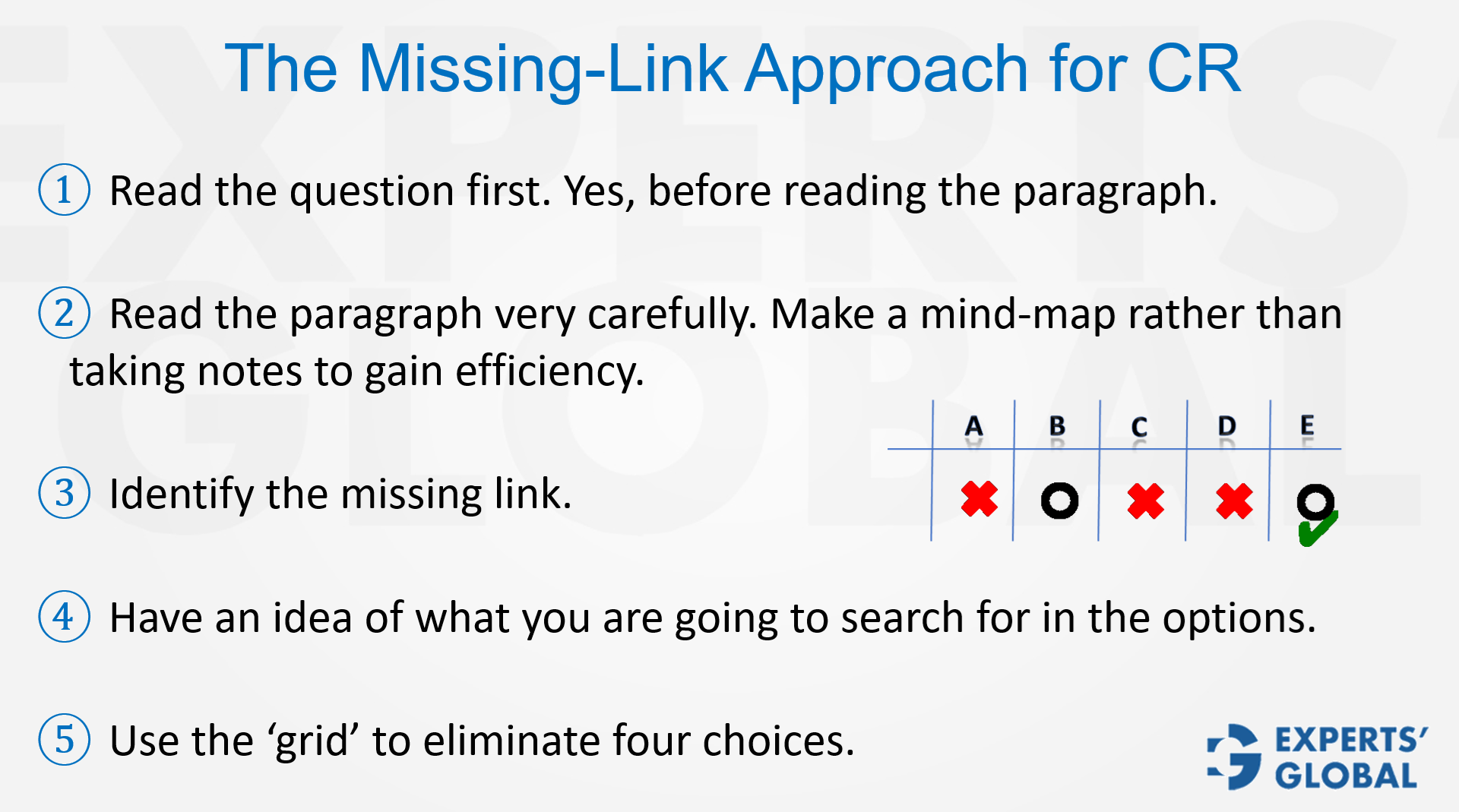Invest 30 seconds...
...for what may lead to a life altering association!
Help Line
- +91.8800.2828.00 (IND)
- 1030-1830 Hrs IST, Mon-Sat
- support@expertsglobal.com
...for what may lead to a life altering association!


GMAT CR sometimes hides the fallacy of treating a possibility as a necessity. Example: This medicine can reduce headaches, so you must take it to reduce headaches; flaw: headaches may also ease with rest, hydration, or other remedies; possible helpfulness does not make it required.
Critical Reasoning sometimes examines the gap between what can occur and what must occur. This overview frames the distinction between possibility and necessity, highlighting subset–superset relations, conditional structure, and disciplined inference. You will see how this lens clarifies certain assumption, inference, inference, evaluation tasks, and prevents overclaiming from optional conditions. After the video, read the article to formalize tests and examples. The same reasoning habits support systematic GMAT prep and evidence-based, objective writing across MBA admissions and in other academic and professional contexts.

One subtle flaw in logical reasoning is the tendency to confuse possibility with necessity. This occurs when something that can happen is incorrectly assumed to be something that must happen. On the GMAT, such reasoning flaws are often tested through Critical Reasoning questions, where the challenge lies in distinguishing between conditions that are merely possible and those that are logically necessary.

Consider the case of Olympic athletes. It is true that Olympic athletes maintain a healthy body mass index. However, it would be incorrect to infer that anyone who maintains a healthy BMI must necessarily be an Olympic athlete. The set of Olympic athletes is a subset of the larger group of people with healthy BMIs. To confuse the possibility of being in that subset with the necessity of belonging to it is a clear logical misstep and an example of confusing possibility with necessity fallacy.
Step 1: Begin with the question stem to define the exact requirement.
Step 2: Analyze the reasoning line by line; sketch a Mind map and locate the missing link.
Step 3: Articulate your broad expectation from the correct answer choice.
Step 4: Remove four options; the single option remaining is your answer.
Verify once more before final confirmation.

Consider the following…
Mike is an actor who played negative characters in many movies. He was considering contesting upcoming senate elections. He would contest only if he was convinced that his image of playing negative characters would not affect public perception of his ability to perform federal duties. Public majority would vote for him only if the majority was convinced about his ability to perform federal duties.
If each of the statements above is true, which (all) of the following MUST be true?
Imagine an argument involving Mike, who may contest elections if he is convinced. For him to win, the public majority also needs to be convinced. The overlap between Mike’s conviction and the public’s conviction determines the outcome. Now consider statements like:
Statements that claim certainty in such cases often commit the error of confusing possibility with necessity. A situation may allow for multiple explanations, but only some of them are logically inevitable.
Accordingly, you can solve all the statements. For a detailed explanation to all parts, please refer the video above.
Many weakening, assumption, and inference questions hide this flaw in their construction. To avoid being misled, always ask yourself whether the statement is describing something that is absolutely required or merely one of several possible outcomes. Recognizing this difference allows you to eliminate incorrect options and arrive at the logically valid answer.
By practicing these distinctions, students not only improve their test-taking ability but also develop reasoning skills valuable in real-world decision-making. Each flawed argument becomes a reminder that careful thinking demands clarity about what is possible and what is necessary. Sharpening this skill through focused practice and structured study, such as working with a GMAT preparation course, ensures stronger performance and deeper logical confidence.
This discussion center on separating what is possible from what is logically necessary. Many GMAT Critical Reasoning questions test whether you can resist the temptation to treat an option that could occur as one that must occur. Recognizing subset–superset distinctions and carefully testing conditions protects you from flawed conclusions. Consistent practice with GMAT simulations builds the ability to spot this error instantly, sharpening reasoning for both test performance and real-world analytical decisions that demand clarity.
The distinction between possibility and necessity reflects a broader truth about preparation and life. What is possible opens doors, but what is necessary anchors decisions. On the GMAT, this awareness helps avoid flawed reasoning; in MBA applications, it ensures that ambition is balanced with clarity of prerequisites. In life, it reminds us that while countless opportunities may arise, only some are essential for growth. Practicing with a GMAT mock cultivates this habit of discernment, teaching us to separate what merely could be from what truly must be pursued.